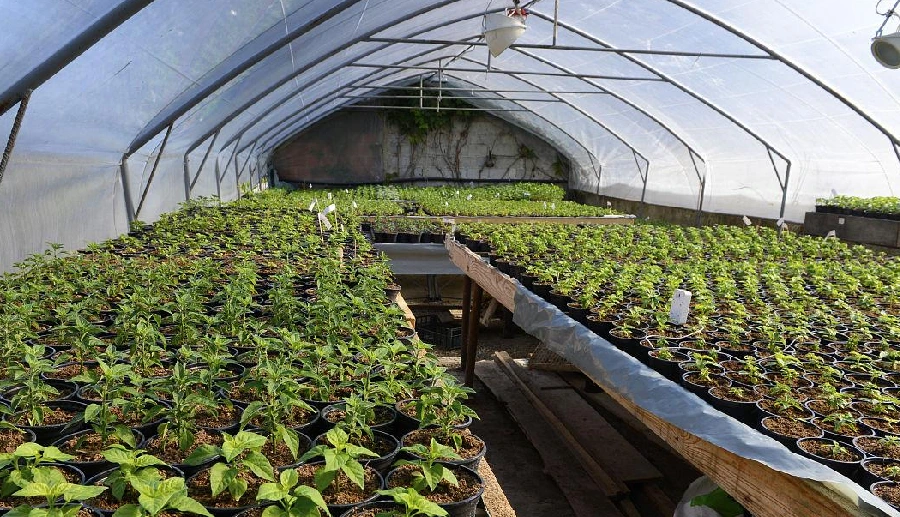Growing plants outdoors comes with one major challenge—unpredictable weather. Seasonal changes, unexpected frost, excessive heat, or heavy rain can wreak havoc on crops, whether you’re growing flowers, fruits, vegetables, or herbs. But what if there was a way to beat greenhouses challenges and create the ideal growing environment all year long? That’s where greenhouses come in.
Greenhouses are no longer just structures for professional farmers or large-scale nurseries. Thanks to advancements in greenhouse technology, anyone from amateur gardeners to large-scale agricultural businesses can create a controlled environment where plants thrive. This controlled setup allows growers to stabilize variables such as temperature, humidity, and light, resulting in consistent growth and thriving harvests. But what makes greenhouses such a game-changer for growers, and why are they more relevant than ever today?
Here, we’ll walk you through the numerous benefits of greenhouses and why they’re the ultimate tool for cultivating a stable, productive gardening environment year-round.
A Stronger Shield Against Weather Extremes
One of the primary benefits of a greenhouse is its ability to protect plants from unpredictable weather. Extreme weather conditions, from sudden temperature drops to heavy storms, can jeopardize plant health. A greenhouse offers a safe haven where conditions like rain, frost, or excessive sunlight won’t disturb the growth process.
Modern greenhouses are designed to handle these weather challenges even better. Insulated materials, ventilators, and automated shutters allow growers to modify the conditions inside the greenhouse effectively, ensuring that crops grow no matter what’s happening outside.
For example, during winter months when temperatures plummet, greenhouses retain heat and create a warm, nurturing environment for plants. Similarly, in summer when temperatures soar, equipped ventilation helps to manage cooling efficiently. This consistency in growing conditions ensures gardeners never lose a growing season due to unfavorable weather.
Extended Growing Seasons Equals More Harvests
Most outdoor crops are limited to specific growing seasons. Without a greenhouse, farmers and gardeners either have to wait for the ideal season or risk suboptimal growth during off-seasons. Greenhouses solve this challenge by allowing the extension of growing seasons.
With year-round protection, growers can cultivate crops out of their usual season, enjoying multiple harvests annually. For instance, vegetables traditionally grown in summer, such as tomatoes, peppers, or cucumbers, can now be grown seamlessly in colder months, maximizing yield and profits. For home gardeners, this means never having to sacrifice their favorite fresh produce because of seasonal barriers.
Controlled Environments for Healthier Plants
Outdoor planting is also susceptible to pests, diseases, and soil-borne illnesses. Pests tend to thrive in open spaces where they can attack leaves, stems, and flowers, resulting in weaker plants or even failure to yield. A greenhouse provides a much-needed line of defense against these nuisances by controlling exposure to the outside world.
Additionally, growers can closely monitor factors such as soil health, water levels, and air quality for optimal plant growth. Advanced humidity controls prevent the dampness that typically allows fungi and molds to grow, while proper ventilation minimizes bacteria buildup. This level of control contributes to healthier plants that grow stronger and produce better-quality yields.
Better Pest Control Without Chemicals
Speaking of pests, greenhouses are a sustainable grower’s dream when it comes to reducing the dependence on chemicals or pesticides. A greenhouse naturally limits how external pests or insects interact with your plants, as the enclosed design keeps most pests out.
This results in two main advantages. First, plants grown in greenhouses are safer for consumption, especially food crops, as fewer or no chemical treatments are necessary. Second, limiting pesticide use helps protect the surrounding environment by reducing runoff into nearby ecosystems. By fostering a protective environment, greenhouses help gardeners achieve their goal of eco-friendly and organically grown plants.
Save Water While Optimizing Growth
Water is one of the most precious resources in agriculture, but traditional gardening and farming practices are known for being water-intensive. Greenhouses significantly reduce unnecessary water consumption by allowing controlled irrigation tailored to the specific needs of plants. Drip irrigation systems or humidity monitoring pipelines can distribute water evenly to roots, ensuring every plant gets just what it needs.
These systems not only prevent overwatering, which can lead to fungus or wasted water, but they also encourage plants to grow faster and healthier. With global water scarcity becoming a pressing issue, greenhouses can help farmers and individual gardeners reduce waste while still achieving impressive results.
Enhanced Climate Control for Specialty Crops
Another standout benefit of greenhouses is their ability to cater to specialty crops. Certain plants thrive only under highly specific conditions, such as tropical fruits, exotic flowers, or rare herbs. Attempting to grow these crops outside their natural habitat can be both challenging and unyielding in traditional outdoor gardening.
Greenhouses solve this by offering precise climate control. Hydroponic systems, supplemental lighting, and advanced ventilation all allow growers to replicate the required growing conditions. This increased flexibility in growing rare or specialty crops opens up opportunities for both hobbyists and commercial growers to experiment with a variety of plants.
Economic and Educational Opportunities
Apart from their practical benefits for plant growth, greenhouses offer valuable learning and economic opportunities. For educational institutions and community centers, greenhouses serve as a hands-on platform where students and volunteers can learn everything about sustainable gardening, climate control, and plant biology.
On a commercial scale, greenhouses are a smart investment that pays off with increased yields and year-round production. Even smaller operations benefit economically by bringing customized crops to market earlier than competitors, giving them a valuable edge.
Supporting Sustainability and Eco-Friendliness
Sustainability is a growing concern in agriculture as the world searches for ways to reduce its carbon footprint. Greenhouses are helping address these challenges by creating closed-loop systems that use fewer raw materials (water and soil) and generate substantially less waste than conventional farming techniques.
Many modern greenhouses incorporate sustainable energy sources such as solar panels or geothermal power, further reducing their impact on the environment. By combining eco-conscious design and efficient agricultural practices, greenhouses are proving themselves as a major asset to the sustainability movement.
Boost Personal and Professional Productivity
Whether you’re a professional grower or a hobbyist, working in a greenhouse can help boost your productivity in growing high-quality crops. The predictable and controlled environment eliminates guesswork while minimizing common frustrations caused by failed crops or pest problems. This reliability encourages growers to focus on refinement and experimentation, enhancing long-term skills and results.
For professionals, consistent yields mean more predictable revenue streams, which helps maintain or grow their businesses. For hobbyist gardeners, a productive greenhouse offers the satisfaction of a job well done alongside the enjoyment of fresh and rewarding harvests.






Leave a Reply